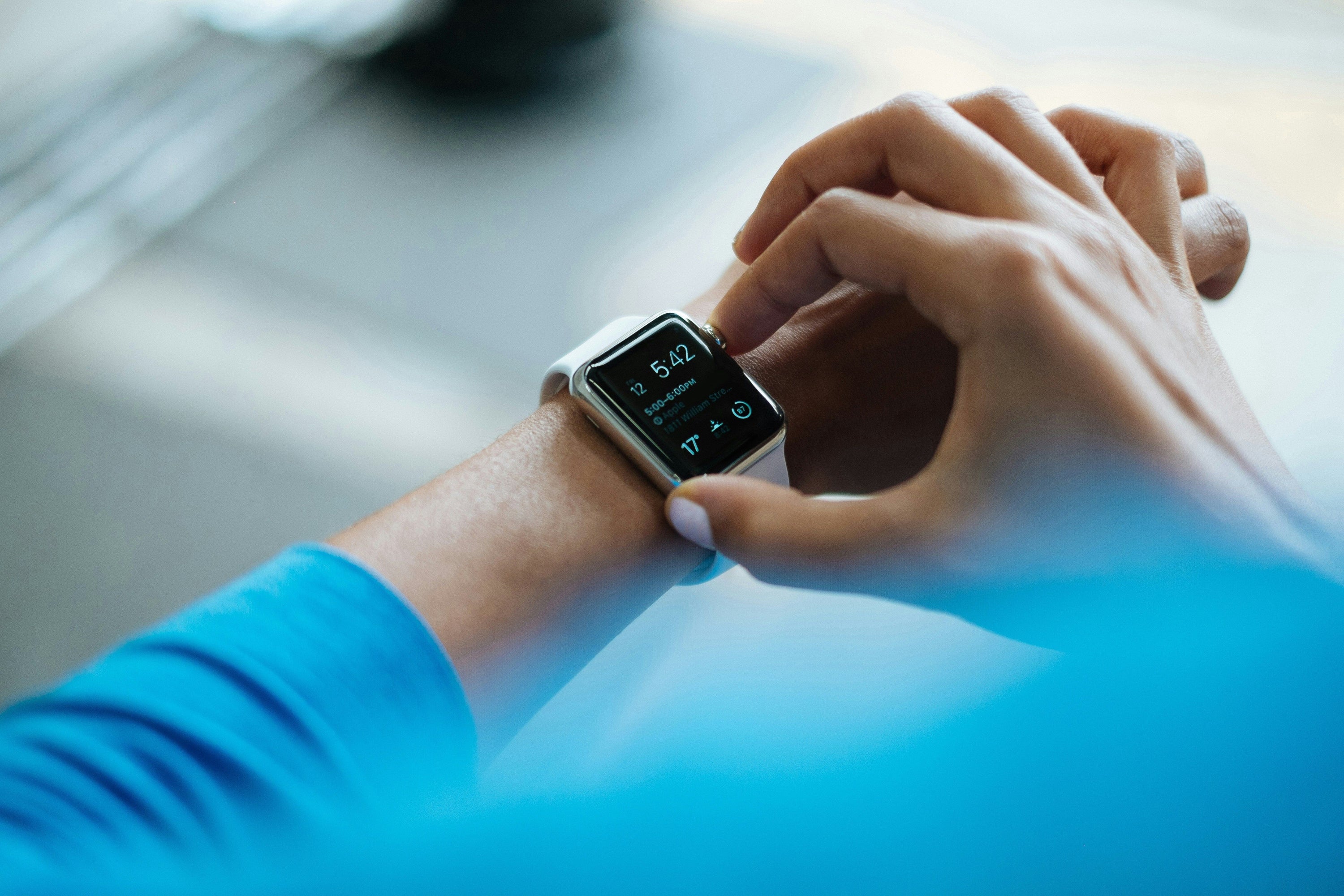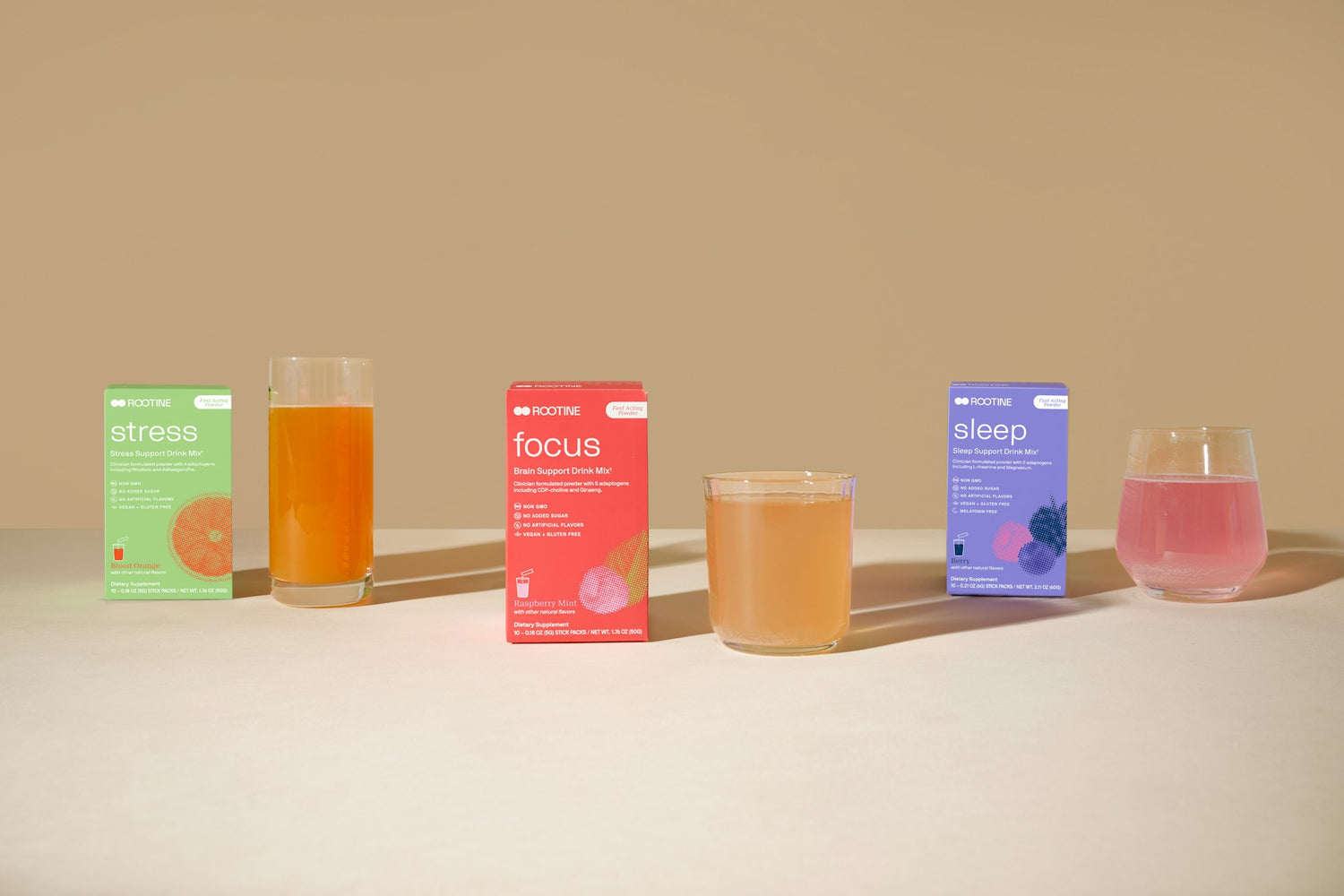Wearable technology (like Apple Watch, Oura Ring, Garmin, and FitBit) has revolutionized the way we track and understand our personal health. But with access to all this data, it can feel overwhelming.
Three key metrics that we suggest monitoring to better understand your health are Heart Rate Variability (HRV), Deep Sleep, and REM Sleep. Each offers unique insight into your overall wellness and can be a guide for maintaining peak physical and mental wellbeing.
Let’s talk about why these are the key metrics to monitor and what you should be looking for to hit optimal levels.
Heart Rate Variability (HRV)
Your heart rate is the number of beats per minute and your heart rate variability is the time difference between each beat.
Most wearable devices track HRV at night when you’re asleep for more accurate measurements, but each device displays your data in different ways:
- Apple Watch pairs with the Health App and stores this data under “Heart”
- Oura Ring displays this data under your Readiness tab
- Fitbit displays nightly average HRV under the Today tab in Daily Metrics
- Depending on your Garmin device, you will need to go into your system settings and enable HRV tracking
Why you should track your HRV
HRV is one of the best markers of overall health and longevity. It’s a function of your nervous system, specifically the autonomic nervous system and indicates how much pressure and stress your system is under.
HRV indicates the resilience and adaptability of your body and mind. Optimal HRV is associated with better health, cardiovascular fitness, improved mental health, sleep quality and has been associated with lower mortality rates.
Tracking HRV can help to assess fitness level, sleep quality, stress burden, heart and brain health, ability to self-regulate, and more.
Optimal Levels of HRV
Generally, higher HRV scores suggest better health, with males typically exhibiting slightly elevated levels compared to females.
General ranges are:
25 years of age: 55-110
35 years of age: 40-75
45 years of age: 35-55
55 years of age: 30-55
65 years of age: 25-50
Remember, this daily metric is an average of multiple data points and highly individualized. It’s normal to see a fluctuation throughout your day or dips in HRV after a hard workout, a bad night of sleep, or after drinking alcohol. But a consistent downward trend could signal that you’re training too hard, not sleeping enough, getting sick, or eating poorly (read: your body is under stress and working overtime.)
How to improve your HRV
This metric is influenced by multiple variables such as fitness levels, medication, illnesses, stress, sleep quality, caffeine intake, hydration, travel, and hormonal fluctuations.
Balancing these variables can help improve and maintain optimal HRV levels, contributing to better overall health and wellbeing. A few consistent habits that support optimal HRV levels are:
- Consistent, quality sleep
- Stress management and balanced cortisol levels
- Regular physical activity
- Nutrient dense diet and hydration
- Using adaptogenic herbs for additional support
Deep Sleep
Deep Sleep is a critical stage of your sleep cycle where your body undergoes significant restoration and repair. This phase is characterized by the slowest brain waves during the sleep cycle and is the state from which it's the hardest to be awakened.
As you enter deep sleep, your heart rate and breathing slow down, your muscles relax, and your body is at its most restful. It's during this stage that human growth hormone is released, contributing to cellular repair and growth.
Most wearable devices have a sleep tab or dashboard that displays your deep sleep data, along with Awake, REM, and Light/Core sleep metrics.
Why you should track Deep Sleep
Deep Sleep plays a significant role in your overall health and well-being. During deep sleep, the body undergoes essential processes like tissue growth and repair, energy replenishment, and strengthening of the immune system. In this stage, your brain also goes through a detoxification process via the glymphatic system which is associated with lower cognitive decline later in life.
If deep sleep stages are inadequate, it may signal underlying health issues or poor sleep hygiene which will negatively impact your overall health.
Optimal Levels of Deep Sleep
According to the NIH, the average adult should aim for 7- 8 hours of sleep each night and 15-25% should be in deep sleep, totaling 1-2 hours per night.
How To Improve Deep Sleep Time
Maximizing deep sleep starts with a great nighttime routine.
- Dim the lights and turn off all blue light devices like TVs and phones to signal to your brain that it’s time to wind down.
- Moderating alcohol intake
- Make sure to cut off any caffeine after 3pm
- Listen to relaxing music or try a meditation flow
- For additional support, try the viral tart cherry “sleep girl” mocktail with a scoop of Unwind, our magnesium powder blend.
- If you’re still struggling to stay asleep, it may be worth trying a small protein snack before bed.
REM Sleep
Rapid Eye Movement (REM) sleep, often described as the dreaming stage, mirrors brain activity during wakefulness, marked by a 20% increase in brain metabolism. During this stage, the body exhibits physiological changes, such as accelerated respiration and heartbeat. Unlike other sleep stages, REM sleep involves temporary skeletal muscle paralysis, known as atonia, preventing individuals from acting out their dreams.
Most wearable devices have a sleep tab or dashboard that displays your deep sleep data, along with Awake, Light/Core, and Deep sleep metrics.
Why you should track REM Sleep
REM sleep is important for emotional and mental wellbeing. In this phase of sleep, memory consolidation, emotional processing, and motor learning development all take place. It may also be important for strengthening and maintaining synapses in the brain.
It’s important to track this phase of sleep because inadequate or disrupted REM sleep can impact mood, cognition, and ability to learn. If you’re experiencing stress or anxiety, you may also be unknowingly experiencing alterations to your REM sleep.
Optimal Levels of REM Sleep
You first enter REM sleep within about 90 minutes of falling asleep. On average, you’ll go through 3-5 REM cycles per night, with each cycle getting longer, and the final one lasting roughly an hour.
For healthy adults, spending 20-25% of your time asleep in the REM stage is a good goal. If you get 7-8 hours of sleep, around 90 minutes of that should be REM.
How To Improve REM Sleep Time
Similar to deep sleep, the best way to improve sleep hygiene is by avoid the factors that disregulate it like:
- Alcohol and caffeine consumption
- Inconsistent sleep schedules
- Blue lights that block melatonin production
- Imbalanced cortisol and chronic stress
- Inactive lifestyles



